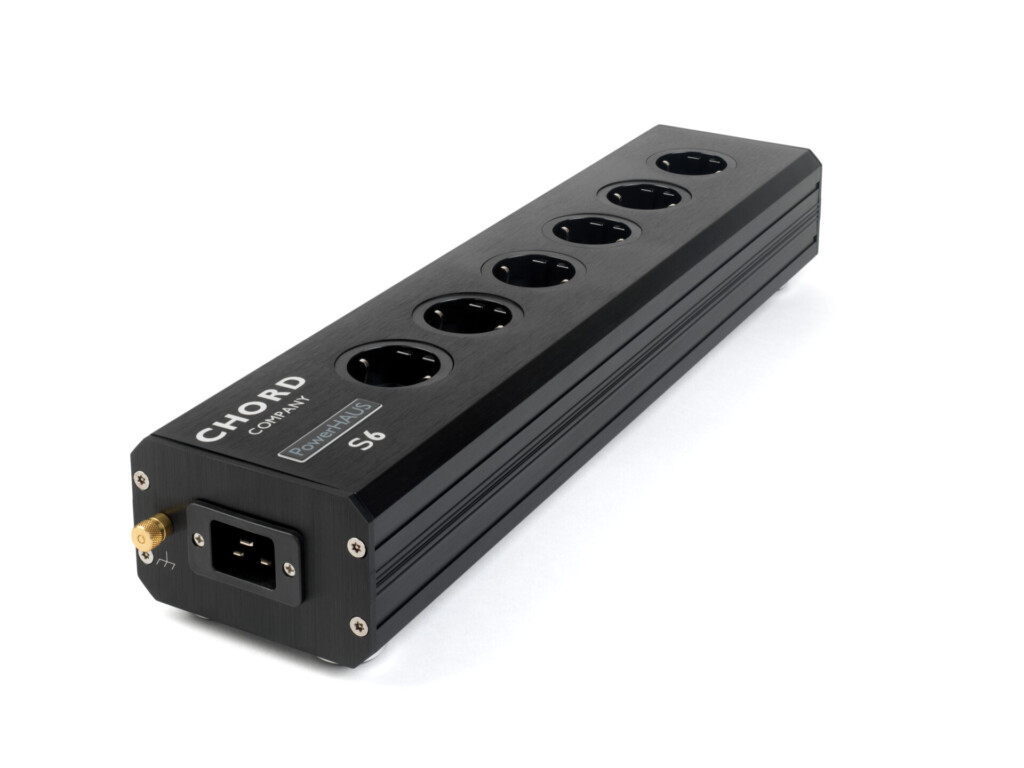Fast forward to today and things have definitely developed. Evolution is a wonderful thing, so these days what we have is a separation of church and state – which in audio terms means that AC distribution and system grounding are treated independently. Hence the parallel grounding products mentioned above. However, none of those audio-specific (signal or chassis) grounds obviate the need for a secure AC ground, or a clean, low-impedance AC supply. Few distribution blocks perform that dual-purpose balancing act quite as neatly or effectively as The Chord Co’s PowerHAUS M6 – especially when combined with their GroundARAY independent signal grounding solution.
The Chord Co. (not to be confused with the electronics manufacturer of a similar name) has long been a byword for high-value, no-nonsense, common sense solutions to audio’s many cable-related conundrums. It’s first products were a direct response to the distinctly real-world issue of connecting RCA equipped CD players to the Din-sockets on Naim amplifiers – at a time when Naim were so anti-digital that the term CD was spat rather than spoken. The rest as they say, is history. While the flat-earthers loudly proclaimed the irrelevance of high-quality cabling, Chord quietly went about developing a whole family of products and selling them to the growing number of dealers and customers who’d grown tired of the Kool-Aid and started to listen for themselves. With the flourishing market and the arrival of increasing numbers of imported products, they also developed a reputation for being able to supply custom terminated cables for occasionally bizarre equipment combinations – a skillset that brought them full-circle back to their origin.
Never ones to simply follow fashion or leap aboard the latest band-wagon, the company’s measured approach has seen it arrive late to both the power cord and parallel grounding parties, although the products that eventually appeared were notably cost-effective in the case of the AC leads; suitably innovative, efficient and incredibly practical in the case of the GroundARAY inserts. https://gy8.eu/review/chord-groundaray/ Now, arguably even more belated, the company has unveiled its AC distribution solution, in the bluff, unequivocal shape of the PowerHAUS M6 (£2,000) and S6 (£1,000). Typically considered, carefully executed and reassuringly solid, it has been worth the wait.
Outwardly, there’s little to separate the PowerHAUS M6 from its competition. Together with its shorter, more affordable sibling, the S6, it is built into a heavy gauge aluminium extrusion, the six power sockets located on the top, a 20A IEC input on one end. Both are available equipped with UK 13A or Schuko sockets. The US version uses twin output plates, affording a total of eight sockets and M8/S8 designations. There’s a terminal for a grounding spade (for connection to a parallel clean ground) beside the AC input and in terms of visible features that is all she wrote. The really interesting bits of the PowerHAUS are all on the inside.
Cleanliness is next to Godliness…
As we’ve already seen, implementing a true star ground becomes physically and practically challenging. Although theoretically ideal, if you want to create a linear socket array (and for purely practical reasons, you most certainly do) then the internal arrangements get compromised one way or another: you either end up with different length wires feeding each socket, or a veritable rats nest of excess cable which isn’t just untidy, it risks increased RFI and mechanical interaction. But this is Chord, so the approach adopted is as prosaic as it is sensible. Rather than a true star ground arrangement, the PowerHAUS uses a ground bus that runs the down one side of the unit, isolated in a U-shaped channel to shield it from AC interference. Thus each individual socket is linked to the ground-bus by an identical length of cable and sees what is effectively identical ground impedance. The live and neutral feeds run up the opposite side of the unit, each on its own bus-bar, each housed housed in its own shielding channel, maximising the mechanical and RFI/EMI isolation of the ground path. Considerable attention has been paid to the form and support of the bus-bars themselves, to minimise mechanical vibration. The sockets are carefully selected, while the units themselves are fully CE safety certified – not always the case with audio specific distribution blocks.



